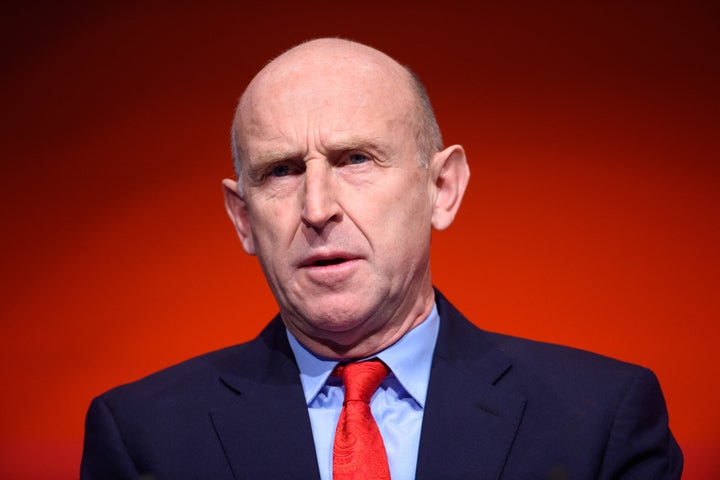
A decade ago, the writer Julian Baggini used demographic data to pinpoint the heart of England, before moving there and writing a book about it. He ended up living in Bramley in north Rotherham, in the constituency I was proud to be re-elected to represent last week.
Our constituency is not usually seen as a must-watch marginal so doesn’t make the political news, but the lessons from our area cast a light on where Labour went so badly wrong, and what now needs to be done.
In places like ours – in Nottinghamshire, Yorkshire and the North East – we came close to the loss of Labour votes on a scale not seen since the meltdown in Labour support in Scotland at the 2015 general election. This result was bad, but it was on the cusp of being much worse.
A dreadful defeat leaves no easy answers, though we need to come up with them fast. We may have four or more years before the next general election, but we may not. And in any case, we will fight important council elections in many of these same areas in early May.
Our priority must be Britain’s real middle. Not the mythical middle class that some in the New Labour years wrongly thought meant those earning £40,000 or £50,000 a year, nor simply the poorest for whom Labour will always care deeply but who in recent years we’ve given the impression are our sole concern.
The average annual full-time wage is just £25,000 and it is the 10 million on ordinary incomes either side of this average that should be Labour’s core constituency and central political concern. These workers are the backbone of our economy and heart of our public services.
Our first big political task is to win back this blue-collar bedrock of Labour’s vote, and their families. This will include many of the estimated million Labour leavers that initial analysis suggests we lost between 2017 and 2019 who ended up voting for the Conservatives or the Brexit Party. While we may have lost marginally more to remain parties such as the Lib Dems, we must never forget these Labour-Tory switchers counted double: minus one in our column and plus one in theirs.
However, this swathe of working class and average income voters have been moving away from Labour for the last four or five elections. The English New Towns in the south and the midlands – 14 towns comprising 16 constituencies like Stevenage, Telford and Harlow – provide a wider lens on the dislocation of the aspirational working class from Labour: in 1997 Labour won all but one of these 16 seats. By May 2010 we held just one, and after last Thursday we represent none.
How can Labour re-orient itself to win back Britain’s real middle? Less than a week after our election defeat, no-one has all the answers but here’s six points all Labour leadership contenders have to take on board.
First, don’t lose sight of the imperative of good opposition to show where the Tories are failing our must-win-back voters. Directly after our 2010 defeat I remember how Labour descended into internal electioneering and by the time we emerged so much of the narrative had been set and the damage done for the 2010-15 Parliament, with George Osborne’s first Budget slashing investment and squeezing public services.
Second, recognise the successes of the last four years. The left has too often appeared embarrassed by our own economics, but the millions vs the millionaires is potent political framing. It is also our best weapon against the Tories’ attempt to start a culture war between Labour and its traditional voters. To carry this off we must be credible, not just radical, and at this election we failed to maintain the fiscal credibility and policy discipline we successfully established in 2017.
Third, don’t neglect place and patriotism. There is no future for a Labour Party that is seen as embarrassed of our country. The most successful movements of the left have shown pride in the national flag. This needn’t be rooted in nostalgia, and concern for our citizens can be a progressive sentiment: a national social contract for all that only Labour can honour.
Fourth, remember that our main political opposition is the Tories, and our main task is to convince those who voted Conservative last Thursday to go with Labour next time. We can only do that when we understand why those who voted Tory did so: swathes of Conservative voters aren’t our enemies, they’re our future allies in forming the next Labour Government.
Fifth, the London Labour bubble is real. This is principally a product of the fact that most who work in national politics have to live in London. Even MPs who represent out of London seats spend most of their week in London, and most of their time talking to the professional political class which populate Westminster. There is no easy fix for this but a roving shadow cabinet once a month would at least get the full top team out of London more often, and reinstating regional shadow cabinet leads would ensure our senior MPs had a sharper sense of the politics away from Westminster and beyond their own constituency.
Finally, it’s undeniable that Brexit dominated last week’s vote. In a Brexit referendum and a Brexit election the public have now been clear, and so should our Labour leadership contenders: our fight must be about the type of Brexit and the huge difference between Labour and Conservative visions for our economy, not about whether Brexit goes ahead. This would help us set aside the sorry saga of the past few years and get down to the business of winning the next election.
John Healey is the MP for Wentworth and Dearne and shadow housing secretary.
